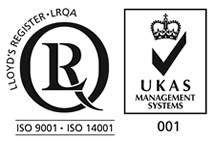
Main Products
Copyright 1998-2025 Firmetal Group All Rights Reserved. | Sitemap
Titanium is silvery white in color and features light weight, high strength, metallic luster and resistance to wet chlorine corrosion. Titanium foil is a thin titanium-based metal. Titanium foil of each thickness has different industrial applications. Titanium is usually thinned using multiple presses and rollers, and the resulting foil is wound around a large tube.
Because titanium is not as prone to corrosion as other materials, it can be thinner for use in challenging environments, thereby reducing weight. It has the highest proportion. Titanium is an ideal material for many medical applications because of its biocompatibility, as well as its non-allergenicity and non-toxicity to living tissues.
The most widely used manufacturing method for titanium foil is flat roll belt rolling, which features high productivity, large scale and output. Production is basically carried out using six-roll cold rolling mills or 20-roll cold rolling mills. There are two mainstream heat treatment methods for foil materials: vacuum annealing and continuous online protective annealing. Vacuum annealing is a heat treatment process that involves placing coiled or sheet-like titanium foils in a vacuum furnace. Continuous online protective annealing of titanium strip foil is a newly introduced technology in recent years. Compared with vacuum annealing, it has a higher production efficiency and a greater improvement in product quality. However, the equipment threshold is relatively high, especially in terms of ensuring product quality and the mechanical performance indicators of titanium foil.
Titanium foil refers to titanium plates, strips, coils or sheets with a thickness of no more than 0.1mm. Another indicator for assessing the thickness of titanium foil is the weight per unit area, such as g/m or oz/fi, etc. The larger this value, the greater the thickness. The width of the titanium foil is cut according to the user's requirements. However, the greater the width during manufacturing, the higher the productivity. The length of the roll body determines the maximum width of the rolled foil. The wider, thinner and harder the rolled piece is, the more difficult it is to roll. The maximum width of rolled titanium foil is approximately 600mm.